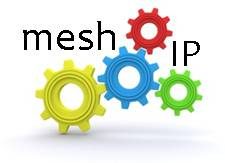 The tech world has no shortage of jargon.
The tech world has no shortage of jargon.
But one term in particular has businesses small and large scratching their heads: What is cloud computing?
Businesses know they’re headed there, but where are they going?
Many of them are already there, even if they don’t realize it. Some of the most basic Web tasks are based in the cloud — a generic term that basically means tapping into online-based services.
Common tasks like e-mail, social networking and online photo-sharing take place in the cloud.
“You almost have to demystify it,” says John Fikany, vice president and general manager of Microsoft, which is hoping to capitalize on the cloud movement. “The reality is, they’ve been playing in it for a while, whether they know it or not.”
At its most basic level, the cloud is a method of maintaining digital information and services online — often many states away in climate-controlled warehouses packed with stacks of servers.
Using the cloud frees up businesses from having to purchase, maintain and troubleshoot their own information-technology services.
It can also serve as a way for firms to grow easily and dynamically as they see surges in business.
Worldwide revenue from public cloud services exceeded $16 billion in 2009 and is on track to reach $55.5 billion in 2014, according to International Data.
Cloud computing lets companies store data and do tasks on off-site servers
Before the advent of the power grid, companies supplied their own electricity with devices like waterwheels, churning constantly to provide enough juice for daily operations.
But more than a hundred years ago, those companies were able to plug into a centralized grid, freeing them from managing their own power sources.
Companies now face a similar transition as they stop using traditional in-house data storage and computing solutions and tap instead into a vast network of online storage.
That context, which serves as the thesis of Nicholas Carr’s influential book “The Big Switch,” is the basis of the cloud computing movement.
Using the cloud — a catch-all term for storing data or completing tasks through off-premise servers — has become a key focus of businesses small and large.
“Once you get past that marketing term, what’s happening is definitely for real,” says Bryan Beecher, director of computer and network services at the University of Michigan.
But many questions remain.
A recent Microsoft survey found that more than half of small- to medium-size businesses in 10 key U.S. cities including Detroit have either never heard of the cloud or have heard of it but know nothing about it.
That same survey also found that only 16% of small- to medium-size businesses had a cloud project planned.
Here is a primer for those thinking of rising further into the cloud:
What is the cloud?
The cloud is basically a metaphor for the Internet.
Tapping into the cloud allows companies to abandon on-premise servers and IT departments tasked with maintaining and troubleshooting computing resources inside their own four walls.
“At the end of the day, the less IT resources you have on premise and focus instead on your core business the better,” says Vanessa Alvarez, a cloud-computing analyst at Forrester Research.
Most of us use the cloud daily already with tasks like e-mail. Those messages and any attachments are stored in servers far away, not on our computers.
“You might not be sure where they are, but that’s OK. You don’t have to care where they are,” Beecher says.
Cloud computing advantages
• Ability to upgrade. One of the largest expenses in a traditional IT department is upgrading, troubleshooting and fixing in-house server solutions.
In the cloud, those servers are maintained and upgraded automatically by a provider like Amazon, Microsoft or Google.
“When you’re in the cloud environment, you’re always on the latest and greatest,” says Microsoft Vice President and General Manager John Fikany.
• Ability to scale. Using cloud computing also allows business to make it safely through sudden or anticipated spikes in data processing, like the holiday shopping season for merchants.
If those merchants managed their own IT services, they would have to anticipate that spike and maintain that high level of computing resources in-house year-round, even when they only used a fraction.
“For that, cloud is the perfect solution, because you just burst into the cloud,” Alvarez says.
“At the end of that period, you can shut off those resources and that’s it. You’re not continuing to pay for that infrastructure.”
• Flexible computing resources. The cloud isn’t just about storing data on far-away servers. Tapping into the cloud also allows companies to create virtual machines — theoretical computers that sit fully inside the cloud.
Virtual machines aren’t actually computers, they’re just chunks of the cloud, but they can perform all the same tasks. And, to the end user, there’s no knowing that the applications and files they’re accessing are actually stored far away and not on their machine.
Using them reduces a business’ reliance on buying and maintaining traditional and high-powered computer hardware and allows it to set aside segments of the cloud devoted to computing tasks, Beecher says.
“When I don’t need a virtual machine anymore, Amazon will turn off the bill,” he says.
Cloud computing disadvantages
For some businesses, it might be more cost effective to not enter the cloud.
Especially for small firms, it might make sense to buy a small low-end $1,000 server and run it for 10 years, Beecher says.
Cloud service prices vary widely depending on the amount of storage and amount of layered services provided, but most pricing plans will charge per hour — sometimes at a rate of a cent or less — and also for the amount of storage you need.
Businesses also lose physical control of their hardware, as they depend on a company, sometimes across the country, to maintain the infrastructure that their business runs on.
How do cloud services differ?
There are two main types of cloud services: public and private.
The large players in the public arena are Amazon’s Web Services and Google.
These are the most basic of the cloud options, Alvarez says, and they offer limited, but very cost-effective options for simple services like data storage.
Private cloud services from companies like Microsoft, AT&T and Verizon offer enhanced security and data management options for tasks like virtual computing.
Most companies use a hybrid solution by tapping into both cloud types to leverage the cost-effectiveness of the public cloud and the security options of the private cloud, Alvarez says.
Streamlining and efficiency: Is that code for job losses?
Not always.
Many companies are using the resources freed up by a cloud-based data strategy in other parts of their companies.
“In some cases, they’re reducing,” Fikany said of firms that had previously managed their own data centers. “In other cases, they’re redeploying people.”
For U-M’s Beecher, a cloud-based strategy allows him to do more with his own resources.
“I can do less of the very routine stuff — that other people are better at anyway — and focus on the tech that’s more unique to the kind of business we have here.
“Why would I want to hire somebody to manage a machine room and figure out how much electricity we need when I can pay Amazon that?”
If a company puts its data on the Web, who owns it?
For consumers, part of the trepidation with giving cloud-based sites like Facebook or Flickr data such as photos or videos is that those sites assume some ownership of that content.
For corporate entities, though, data ownership is something that is hashed out at the beginning of any cloud-based strategy, says Eric Abbot, an online solution specialist at Microsoft. And all that important data remains owned solely by the businesses.
Part of that, too, is the ability for firms to take the data stored to another company if desired, Abbot said, which is also part of the agreements hashed out at the outset.
But putting your company’s data in the cloud still may carry some risks, Beecher says.
Even if a company retains ownership rights to its data, storing it elsewhere may open up the hosting company to some disclosure through official requests such as subpoenas or Freedom of Information Act requests.
“It might not be an ownership problem,” he says. “But can people get to it when they might not have been able to get to it if it wasn’t in the cloud?
Is data stored in the cloud safe?
Private cloud services, like those offered by Microsoft, include high levels of security.
Data centers are kept current with international standards on security and data back-ups, Microsoft says.
If a company has to keep sensitive information such as financial or medical records, a hybrid solution can be worked out to keep some data secure in-house while still leveraging the power of the cloud on other tasks, Abbot says.
“We aren’t saying that the cloud is right for everybody,” he says.
And moving data from in-house servers to the cloud can actually improve security, Alvarez says, as many security breaches come from a company’s own employees with the theft of things like trade secrets.
“There’s really no difference anymore between whether you have it on-premise or in the cloud,” Alvarez says. “You still run the same risks.”
- The Customer Edge Drives the Need for NaaS - June 25, 2023
- Blockchain Evolves And Secures - January 13, 2019
- Bessemer Ventures’ 2018 Cloud Computing Trends - February 25, 2018




